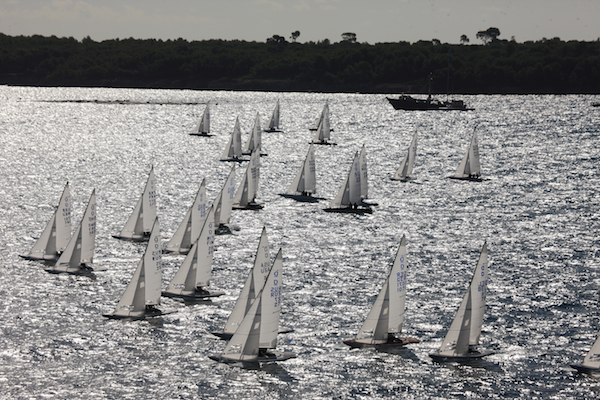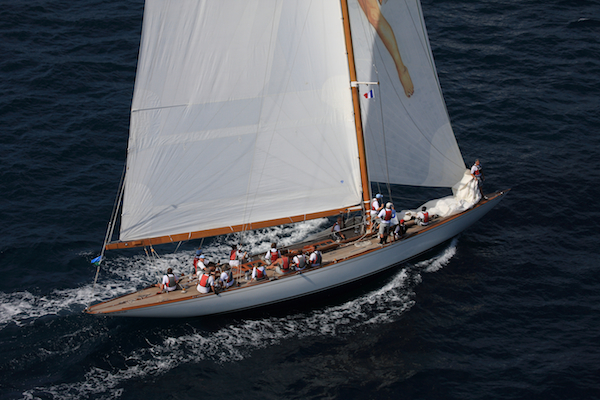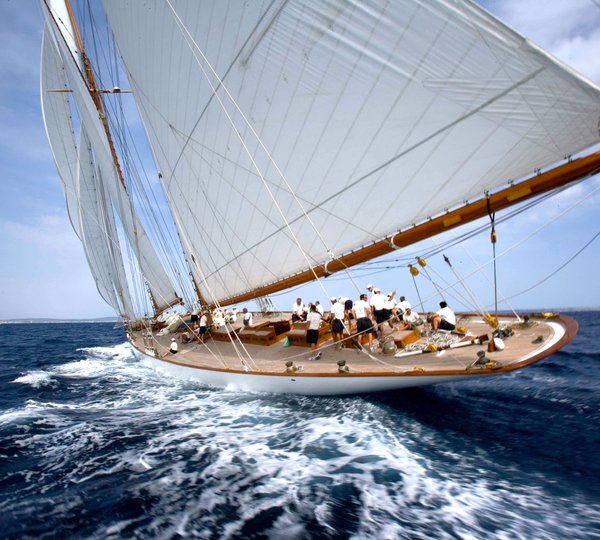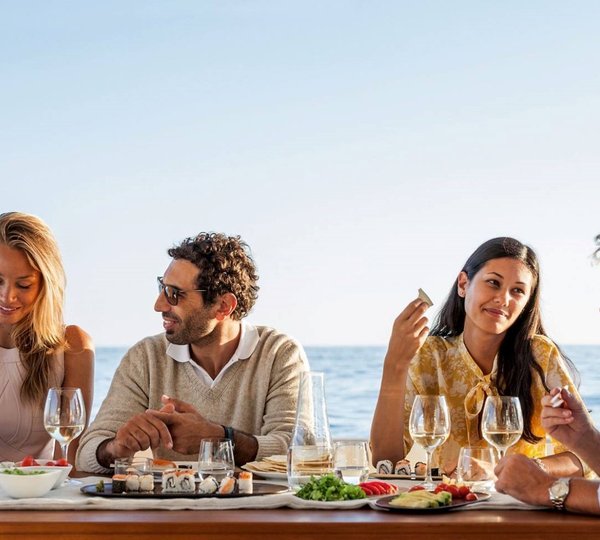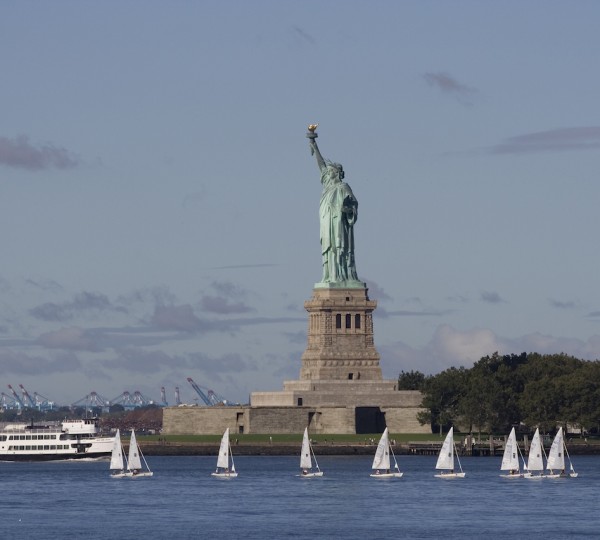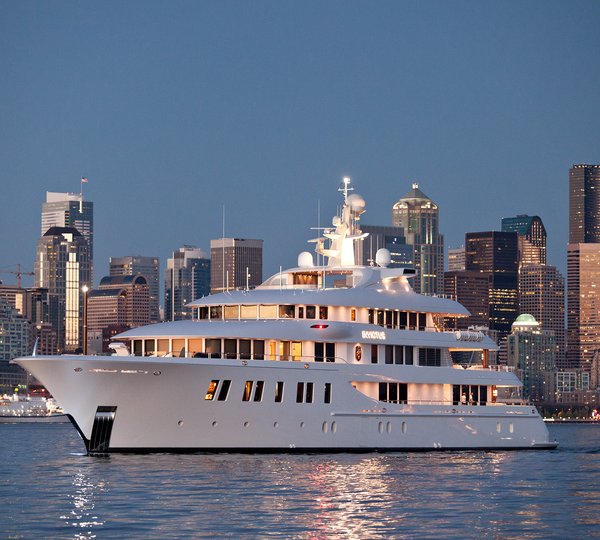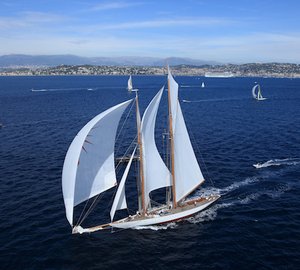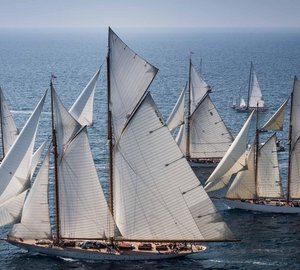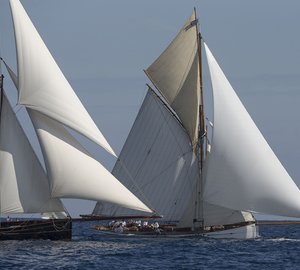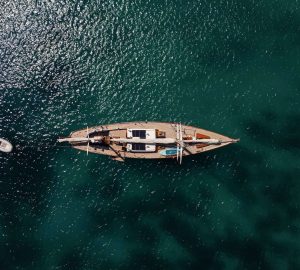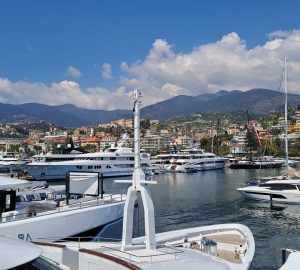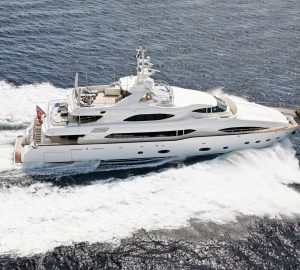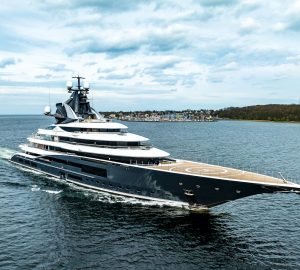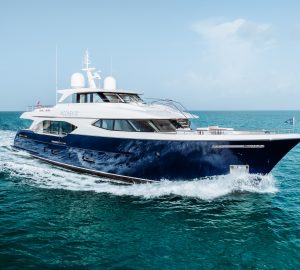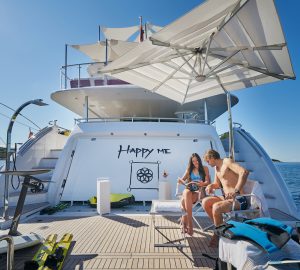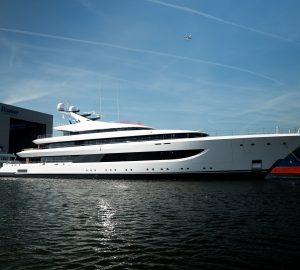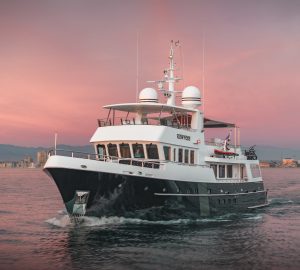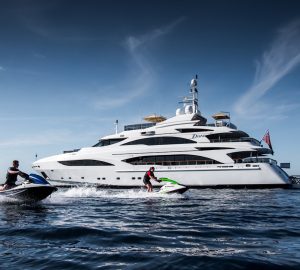The last racing day of this year’s Régates Royales – Trophée Panerai saw the 43 Dragons compete in three races in perfect conditions: flat sea as well as a good and steady north-easterly breeze. The week long battle between the Italian skipper Giuseppe Duca on Cloud yacht and Russia’s Anatoly Longinov has been completed today with the latter taking first place, followed by Duca with Soren Pehrsson from Denmark. The classic yachts enjoyed amazing racing conditions despite the overcast skies with a big coastal course in the bay of La Napoule sailed under a steady 12 knots easterly breeze.
There was no respite for the Dragon sailors today, the final and decisive racing day in the Golfe Juan. Three races where sailed with a good breeze of around ten knots from the north-east that shifted progressively to the east/south-east and changed in intensity. It was then a question of not only being fast but also of taking taking care to choose the right course whilst maintaining a watchful eye on the closet rivals for the overall scoreboard.
As it happens it was Russia’s Anatoly Loginov on Annapurna yacht, who has won on past editions of the Régates Royales to show better consistency and score a fourth a third and a second place that paid huge dividends. Consistency was key as some crews lost their chance to be on the podium due to mediocre results over the first days of the series. This was the case for Ivan Bradbury (Blue Haze) from the UK who didn’t finish the first race and slipped down to an unusual thirtieth in the sixth one and finish in 4th overall. A black flag forced German Helmut Schmidt (Kleine Brise) to a fifth overall. For Danish Bo Selko (Bonobo) it was an OCS that would shatter hopes to do better than sixth while UK’s, Martin Payne (Bear) had to abandon the second to last race which left him in seventh overall.
One just needs to see the overall results to realise that the three leaders were never in real danger throughout the whole ten-race regatta, despite some poor performances which they were able to discard.
Yet it was the last racing day that would provide the name of the 34th Régates Royales champion. Anatoly Loginov (Annapurna) got gold, Italian Giuseppe Duca (Cloud) who was on top of the leader boat up to the mornig of the last day of racing, saw his lead drop with a sixteenth, a tenth and an eighth relegating him to second overall while Soren Pehrsson (Blue Lady) from Denmark, who started well with a win was unable to maintain the consistency over the final races and takes third, or bronze overall.
Dragon Final overall results after ten races and one discard
1-Anatoly Loginov (RUS) Annapurna: 40 points
2-Giuseppe Duca (ITA) Cloud: 62 points
3-Soren Pehrsson (DEN) Blue Lady: 78 points
4-Ivan Bradbury (GBR) Blue Haze: 92 points
5-Helmut Schmidt (GER) Kleine Brise: 98 points
6-Bo Selko (DEN) Bonobo: 100 points
7-Martin Payne (GBR) Bear: 105 points
8-Victor Fogelson (RUS) Sunflower: 116 points
9-Joseph Varoqui (FRA) Rusalka: 117 points
10-Vassily Senatorov (RUS) I Feel Good: 125 points
A tour in the Bay
Despite the greyish sky and the hazy atmosphere, the large classic fleet was able to sail another race in variable conditions, in a shifty and often fluctuating easterly. Tight starts, close mark roundings, lots of manoeuvres to hoist gaffs, staysails, jibs, spinnakers or gennakers as the course provided the crews with almost every possible point of sail. Some, like Paulena even zigzagged near the marks to avoid dangerous traffic jams. In such conditions, tactics and good manoeuvring were paramount and there was an intense battle for the lead. Among the Vintage Gaffers, Nan of Fife won on corrected time followed by Avel and Bona Fide, whose crew nonetheless looked extremely focused and fast.
In the Big Boats division, the two charter yacht Moonbeam “brothers” triumphed in style with number 3 crossing the line just seconds before number 4 and Mariquita superyacht stole third place to Thendara by a hair’s breadth. Arcadia largely dominated the Vintage class while Paulena surprised her competitors with some unusual manoeuvres at the back of the fleet.
Leonore won among the Big Marconi leaving behind Manitou and Rowdy and among the small Marconis Cholita scored a precious win. Finally one more victory for the Dilong Catleya on Highlander and the 6M Nada. For all classes tomorrow’s grande finale will be crucial to decide the winners of the 34th Régates Royales-Trophée Panerai, especially because the weather forecast does not look easy at all, with strong breeze forecast to play a major role of the final act.
One date, one class
The “Fighting Forties” are incredible racing machines despite being created for corinthian sailors looking for fast cruisers, suited for day-sailing off Newport. But the “Bristol magician” was not a man to compromise and when he wanted his ideas to be accepted (and he had plenty) he never dithered to push forward radical designs. These boats are actually very extreme, with a huge beam and a large V-shaped hull, a light displacement and a big sail area.
Nathanaël Herreshoff explored the whole world of naval architecture from the young age of sixteen (Violet was designed in1864) until the very last years of his long life (Belisarius from1935) that ended on June 2nd 1938 when he was 90. he produced over 18.000 designs for more than 2,000 boats that were mostly built by his brother’s shipyard. When the New York Yacht Club (NYYC) board decided to create a one-design boat especially for its members, they naturally went for the most titled of all naval architects, designer of six America’s Cup winners.
Vigilant (1893), Defender (1895), Columbia (1899 et 1901), Reliance (1903), Resolute (1920) are among the most fascinating yachts of their times, but the architect who graduated in engineering at the famous Boston MIT, also designed motor boats, cat-boats, dinghies, sloops, ketches, schooners and even a catamaran, Amarylis in 1875.
The new rule allowed to explore new trends and set as the only limit a maximum waterline length of 40 feet, giving Nat Herreshoff plenty of ideas on shapes. In 1900 he already created four 70′ one-design boats (followed by nine more some years later) for the NYYC that became a benchmark for their extreme lightness, fine lines and flat deck: “The main feature of these Herreshoff’s designs is that they look absolutely unperturbed by the waves” commented Casper Withney.
The Fighting Forties turned into an immediate success, twelve boats were built in just one year 1916 among which Pauline, Maisie and Rowdy, later two more Marilee and Rugosa are launched in 1926. With their large gaff sloop rig and the wide beam, these one-designs were particularly fast in stiff breeze so much to make the eminent NYCC’s member Edwin J. Schoettle said: “They’re excellent boats in the breeze and easy to steer and manoeuvre in strong winds. I’m told that nobody has never seen a Forty taking a reef…” and they were designed to be sailed short-handed too, by three crew only! Shortly after the first launches, the New York One Design 40 were equipped with a bowsprit further increasing their sail area.
In 1924, Memory, transformed into a Marconi yawl, won the popular Bermuda race and in 1930 the last boat to be built Rugosa scored a double in the same offshore event. Today, Rowdy is the most successful Forty still racing following her predecessors’ triumphs as Graham Walker’s and his crew have taken almost every race they have competed in the classic yachts circuit.
British owner Graham Walker has a long experience having raced in the America’s Cup in 1987 and to several Admiral’s and Ton Cups in the 90s with his fleet of boats all called Indulgence has later discovered and fallen in love with classic yachts. He had one of the last New York Yacht Club Forty restored in Maine, in the USA. The tally speaks loud: since Graham Walker started sailing on Rowdy (NY-49) in Maine, this one-design has almost won every race as did her older sister ship Marilee (NY-50) built in 1926 and re-launched in 2001 that won also the America’s Cup Jubilee in Cowes.
Fighting Forty
Designer: Nathanaël Herreshoff
Shipyard: Herreshoff Manufacturing Company
LOA: 20,10 m
LWL: 17,90 m
Beam: 4,40 m
Draft: 2,40 m
Displacement: 21,770 kg
Upwind sail area: 225 m2

